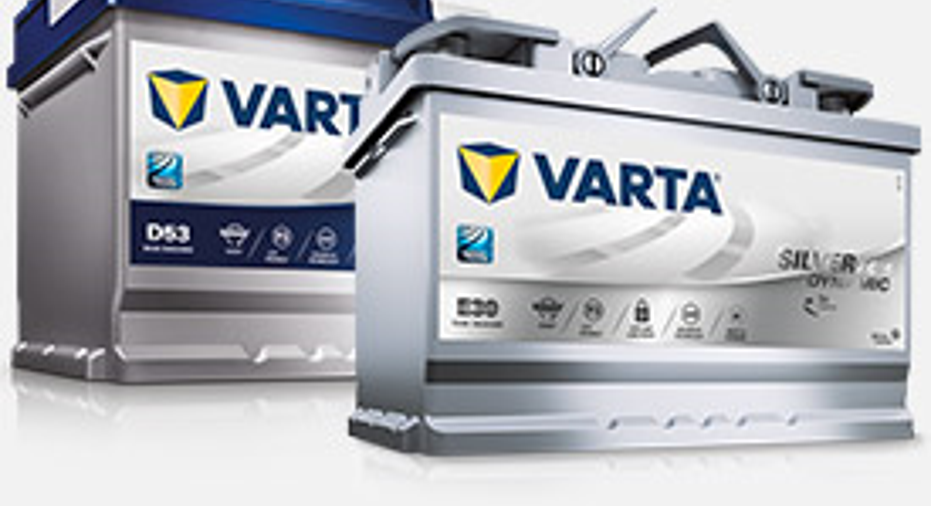How Johnson Controls Is Shaping Up for 2016

Johnson Controls' recent strategic review and outlook failed to convince the market, with the stock down around 7% in the two days' trading afterward. The negative issues look stock-specific rather than any kind of warning on its end market, and rivals such as United Technologies and Ingersoll-Rand Plc shouldn't be unduly worried by what Johnson Controls' management said. However, a deeper dive into the company's guidance suggests management may be taking a rosy view on itsprospects in China in2016. Let's take a closer look.
VARTA AUTOMOTIVE BATTERIES OFFER GOOD LONG-TERM GROWTH FOR JOHNSON CONTROLS. IMAGE SOURCE: VARTA BATTERIES.
Good and bad newsStarting with the good news: Headline guidance for full-year 2016 implies ongoing margin expansion and impressive sales growth.
- Net sales growth is set to rise 4%, ahead of analyst estimates for a 1.4% increase.
- Segment margins are expected to expand by 70 basis points (where 100 equals 1%) to around 12%.
- The EPS forecast is in a range of $3.70 to $3.90, implying growth of 8% to 14% and in line with analyst expectations for $3.80.
- Capital expenditures of $1.3 billion and adjusted free cash flow of around $1.5 billion imply growth of around 7%.
- CEO Alex Molinaroli claimed that Automotive Experience customers (referring to its car interiors and seating segment) are saying that China car production is picking up and government incentives to support car sales would be in place for "at least 15 months."
- Organic sales growth of around 10% is expected for Building Efficiency (i.e., HVAC and building controls) and Power Solutions (i.e., automotive batteries).
And now the bad news:
- Costs associated with the spinoff of the automotive experience segment, to be completed in October, are likely to be $400 million to $600 million.
- Further restructuring costs are expected the following year.
In a nutshell, sales guidance is ahead of estimates, but EPS is only in line, implying that margin expansion is likely to be less than the market anticipated. Moreover, the spinoff and restructuring costs are significant. To put them into context, management expects the auto spinoff process to reach $2.5 billion to $3 billion, so $400 million to $600 million in costs is a significant figure.
GuidanceThe case behind buying Johnson Controls stock is based on its transformation from being an automotive-focused company toward a balanced construction and automotive battery businesses. Following the automotive experience spinoff next October, the remaining company will be comprised of the building efficiency and power solutions segments and generate about half its earnings from each side.
Management gave strong guidance for the near term and midterm for both remaining segments:
DATA SOURCE: JOHNSON CONTROLS PRESENTATIONS.FIGURES EXCLUDE THE HITACHI JOINT VENTURE.
It's strong-looking guidance, and management's key assumptions also look positive:
DATA SOURCE: JOHNSON CONTROLS PRESENTATIONS.*FIGURE IS FOR ASIA.**FIGURE IS FOR U.S. ONLY.
Will these assumptions hold true in 2016?
Two concerns with China guidanceChina looms large in regard to Johnson Controls' future. The company is investing heavily in new plants for Power Solutions and expects the Hitachi joint venture to help propel HVAC sales in the country. Meanwhile, the Automotive Experience segment claims a 44% automotive market share in China. Moreover, management expects that by 2020 China will be the world's largest automotive battery market and will make up 40% of the global HVAC market.
However, both key assumptions on China/Asia outlined in the preceding table are subject to question. First, Ingersoll-Rand's recent third quarter saw HVAC revenue flat in Asia, with management citing "continued weakness in China and emerging markets." Meanwhile, United Technologies' third quarter saw new equipment orders at CCS (which contains the Carrier brand) in China down 8%.
Second, Johnson Controls' assumptions for China automobile production imply a significant pickup in 2016.
DATA SOURCE: CHINA ASSOCIATION OF AUTOMOBILE MANUFACTURERS. LAST TWO DATA POINTS ARE JOHNSON CONTROLS ESTIMATES.
While it's true that China passenger-car production increased 8.1% in October compared to last year, production is still up only 2.2% in the first 10 months compared to the same period last year. Government incentives to spur new-car sales are obviously having an effect, but will they produce the kinds of increase in production that Johnson Controls expects for 2016?
The takeawayAll told, the company is focusing its long-term growth prospects on China, and its assumptions on automotive and construction growth in China and Asia look optimistic in my view. Meanwhile, the significant costs associated with the spinoff of the automotive experience segment are disappointing and come with unspecified restructuring costs to follow.
If you're bullish on China for the near and long term, then Johnson Controls is a very attractive stock, butforthose looking cautiously at the country, it might be oneto avoid.
The article How Johnson Controls Is Shaping Up for 2016 originally appeared on Fool.com.
Lee Samaha has no position in any stocks mentioned. The Motley Fool owns shares of Johnson Controls,. Try any of our Foolish newsletter services free for 30 days. We Fools may not all hold the same opinions, but we all believe that considering a diverse range of insights makes us better investors. The Motley Fool has a disclosure policy.
Copyright 1995 - 2015 The Motley Fool, LLC. All rights reserved. The Motley Fool has a disclosure policy.



















